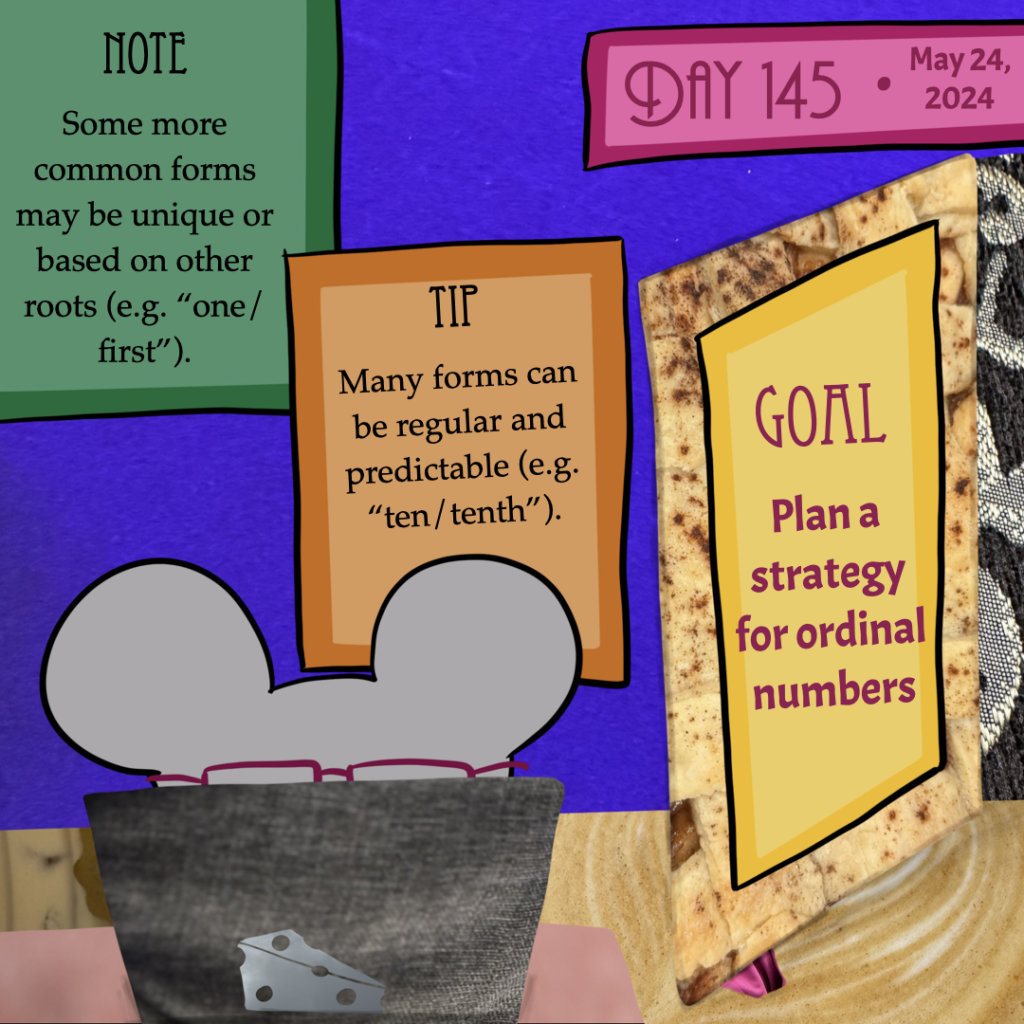
Goal: Plan a strategy for ordinal numbers
Note: Some more common forms may be unique or based on other roots (e.g. “one/first”).
Tip: Many forms can be regular and predictable (e.g. “ten/tenth”).
Work focus: Organize/Plan/Structure
Use today to plan out a strategy for your ordinal numbers, such as “first” and “fourth.” You may choose to use the same forms as your cardinal numbers but with different placement relative to the head noun (e.g. [one-dog] could mean “one dog” while [dog-one] means “first dog”). However, you could choose to have a compound or derivational strategy to create ordinal forms from the cardinal forms.
All ordinal forms may be more regularly formed (i.e. all forms are predictable once you know the pattern), but you could also incorporate some irregular forms, especially for the lowest ordinal numbers, which tend to be the most used. For instance, English “first” and “second” are irregular forms, “third” is slightly irregular with some metathesis, and then “fourth” and up are regular and predictable forms.
